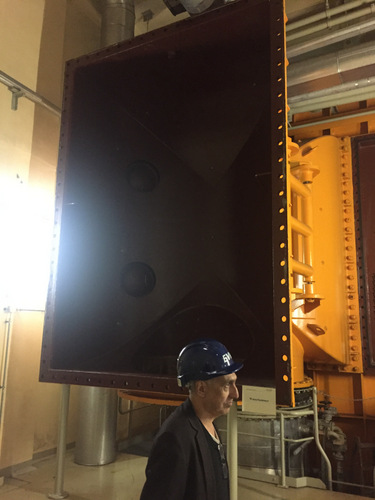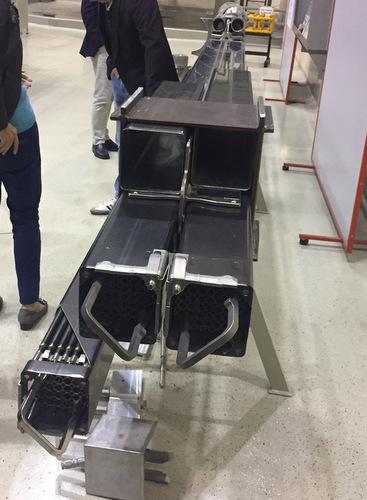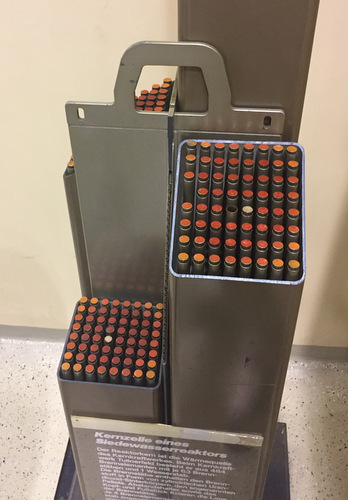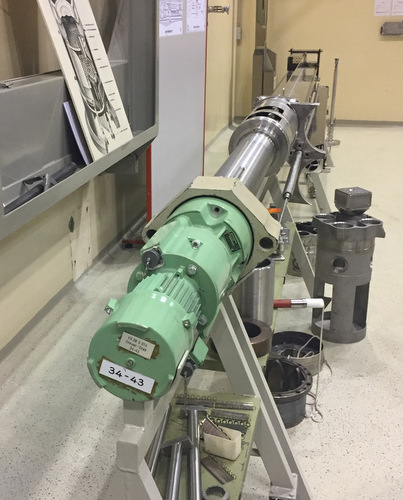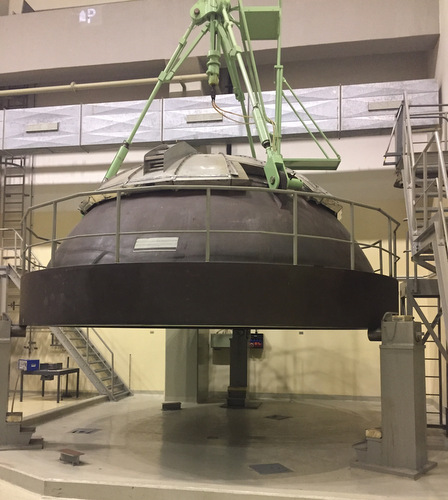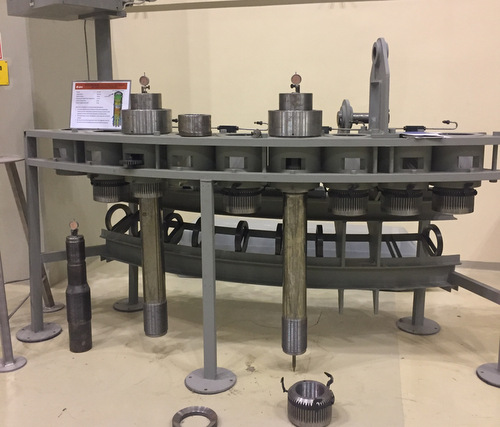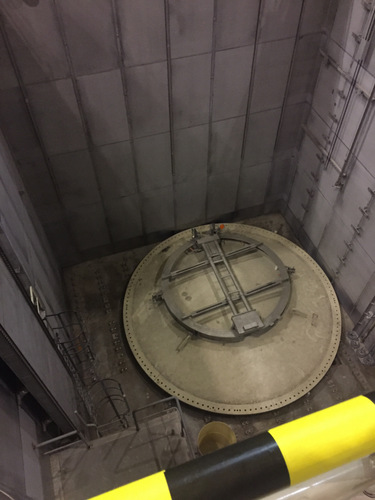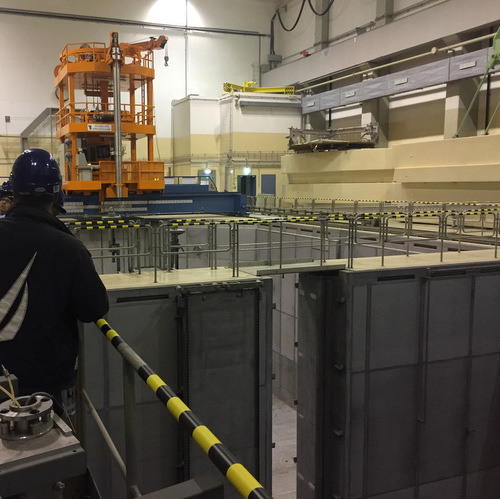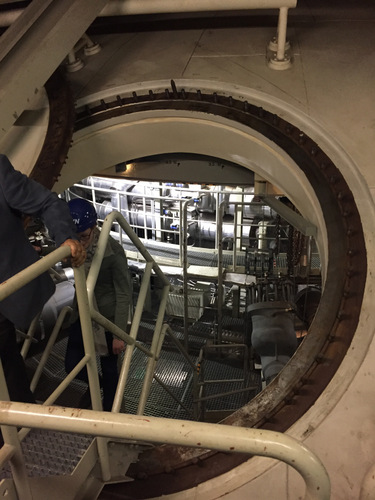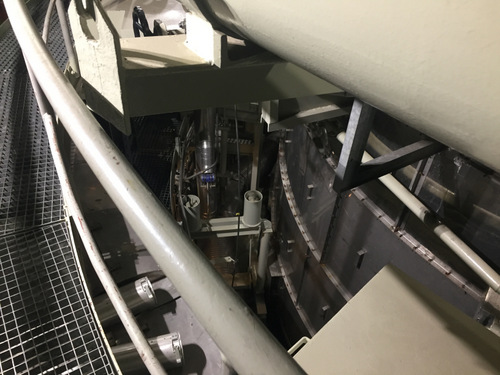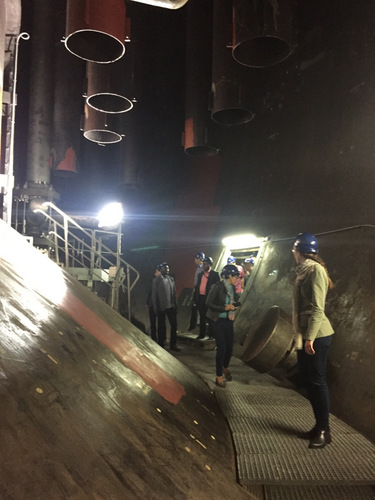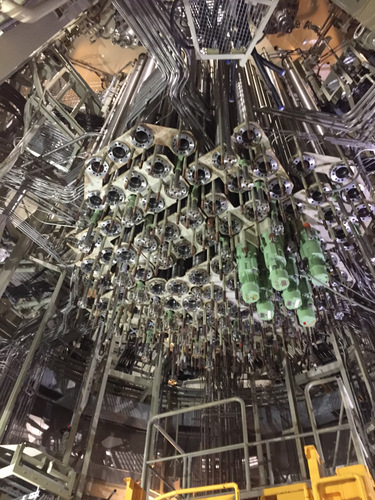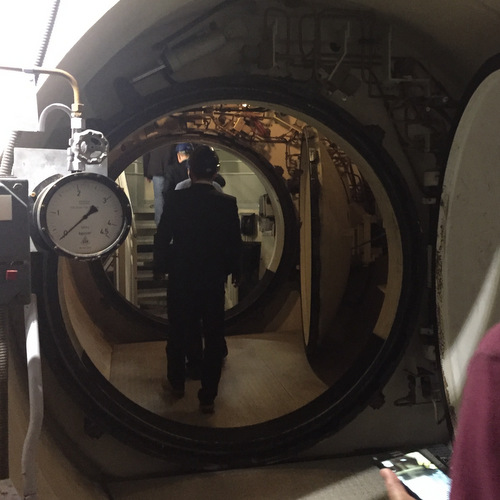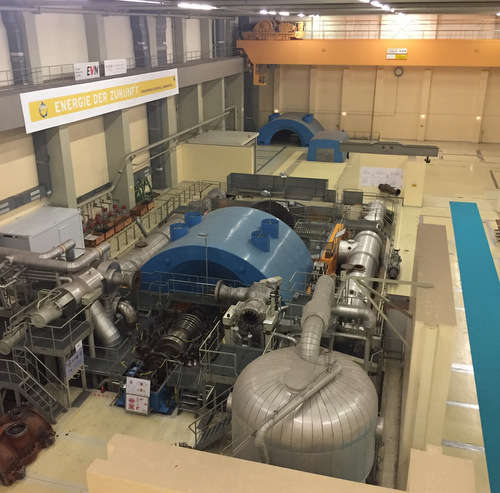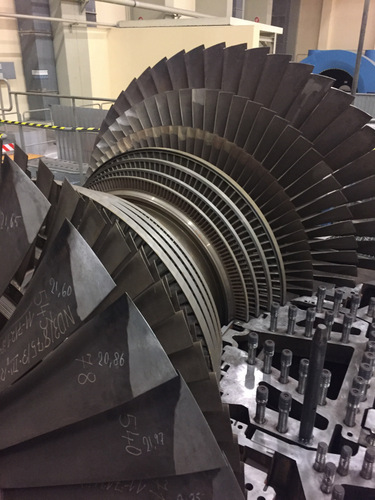The safest nuclear power plant in the world (visit to Zwentendorf NPP)
At 30 kilometers from Vienna there is a little-known nuclear power plant, which was built, but never included. Now there are guided tours and there you can see how the nuclear power plant is arranged and what is inside it. I was lucky to go there recently.
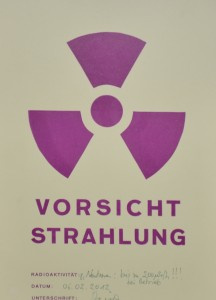
KDPV not with nuclear power plants at all. There are no such tablets in Zventendorf.
In addition, the station may not be considered the safest, but more on that below. Carefully, many photos (all clickable).
Long ago, in Austria, they also wanted to develop nuclear energy and in 1972 began to build nuclear power plants on the banks of the Danube near Tulln. The station was called Tullnerfeld. In 1978, the NPP was completely completed, tested, the fuel assemblies were delivered to a dry storage facility, it remained to be loaded into the reactor and turned on. By that time, green protests had already begun, and it was decided to hold a referendum. It is believed that the main motive for the referendum was political - the then Chancellor Bruno Kreisky was confident in the absolute support of the population and wanted to hold and win the first referendum in the new history of Austria, but he was wrong, and the result of 50.47% was 49.53% defeated by opponents of the NPP. Perhaps the result was influenced by the fact that Kreisky promised to resign in case of defeat. He never resigned, but this difference was enough to completely abandon nuclear power in Austria.
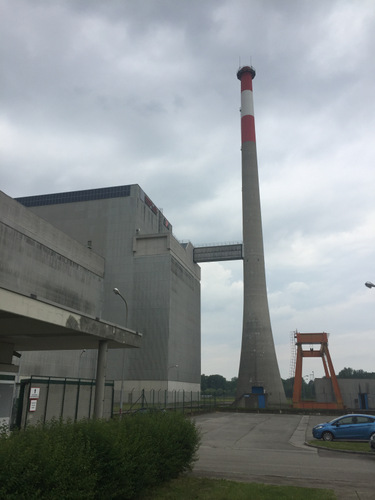
After the referendum, the entire nuclear program of Austria was closed and tried to “forget”, 2 planned stations in St. Petersburg Pantaleon-Erla and St. Andrä was canceled, according to unverified information, there were plans to build another 2, but now they are difficult to find even in the archives.
Tullnerfeld was renamed Zwentendorf, fuel was sold back to Westinghouse, the station was mothballed in the hope that public opinion would be changed and the station would be switched on. But by the mid-80s it became clear that the ban would not be lifted, but it would be expensive to maintain a conserved station. Because the station was completely closed, and the reactor equipment began to gradually sell off to other reactors of this type. The result was a unique historical monument and museum, as well as a training ground for NPP operators and Magate inspectors. By the way, on Fridays there excursions for everyone (but only over 16 years old), I recommend .
And to replace the next built coal power plant Dürnrohr of the same capacity, smokes so far.
The station has one boiling water reactor with a capacity of 723 MW (BWR, Boiling Water Reactor). This is a single-circuit reactor with containment (containment) in the form of an iron sphere, which in the event of an accident should contain radioactive substances inside. The sphere is located in a concrete building that protects from external influences - let the professionals correct me, not sure whether the building should be considered part of the containment: it protects, but is not airtight .
Turbine generators are outside. On the wall I found a sphere map:

Orange color shows the core, steam dehumidification devices and pipelines towards the generator turbines. Turbines rotate at a speed of 3000 rpm, because water droplets are harmful to the blades and the steam must be “dry”. Green indicates pipes through which water from condensers is pumped back into the reactor. Below on the plan (white tubes) control rod drives are shown.
To begin with, we were shown a film with historical footage from the station’s construction. A sphere with a diameter of 26 meters, together with the reactor, was assembled near the station, and then completely dragged into the building and concreted the wall. Unfortunately, this video I have not found anywhere else.
After a short briefing on TB we pass through the territory of the station and through the massive iron doors we get inside. In front of the doors, our guide tells us that here the inspector must think carefully whether he has forgotten something. At the gate explains why: at a working station, paperwork and changing clothes takes about half an hour. Approximately the same occupy the measurement of radiation and disguise for the exit. Of course there are wash basins, a zone for decontamination (shower), measuring devices:
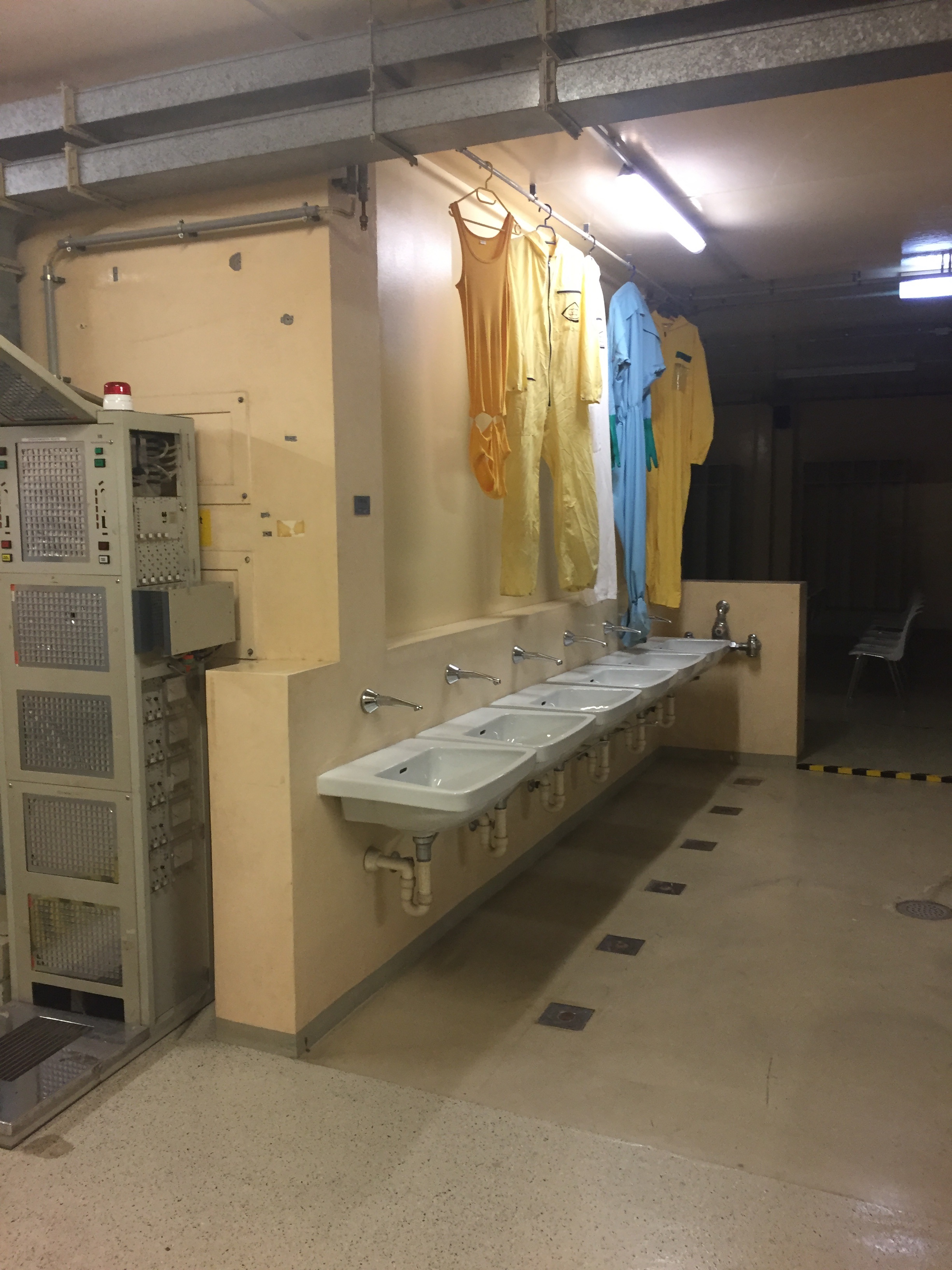
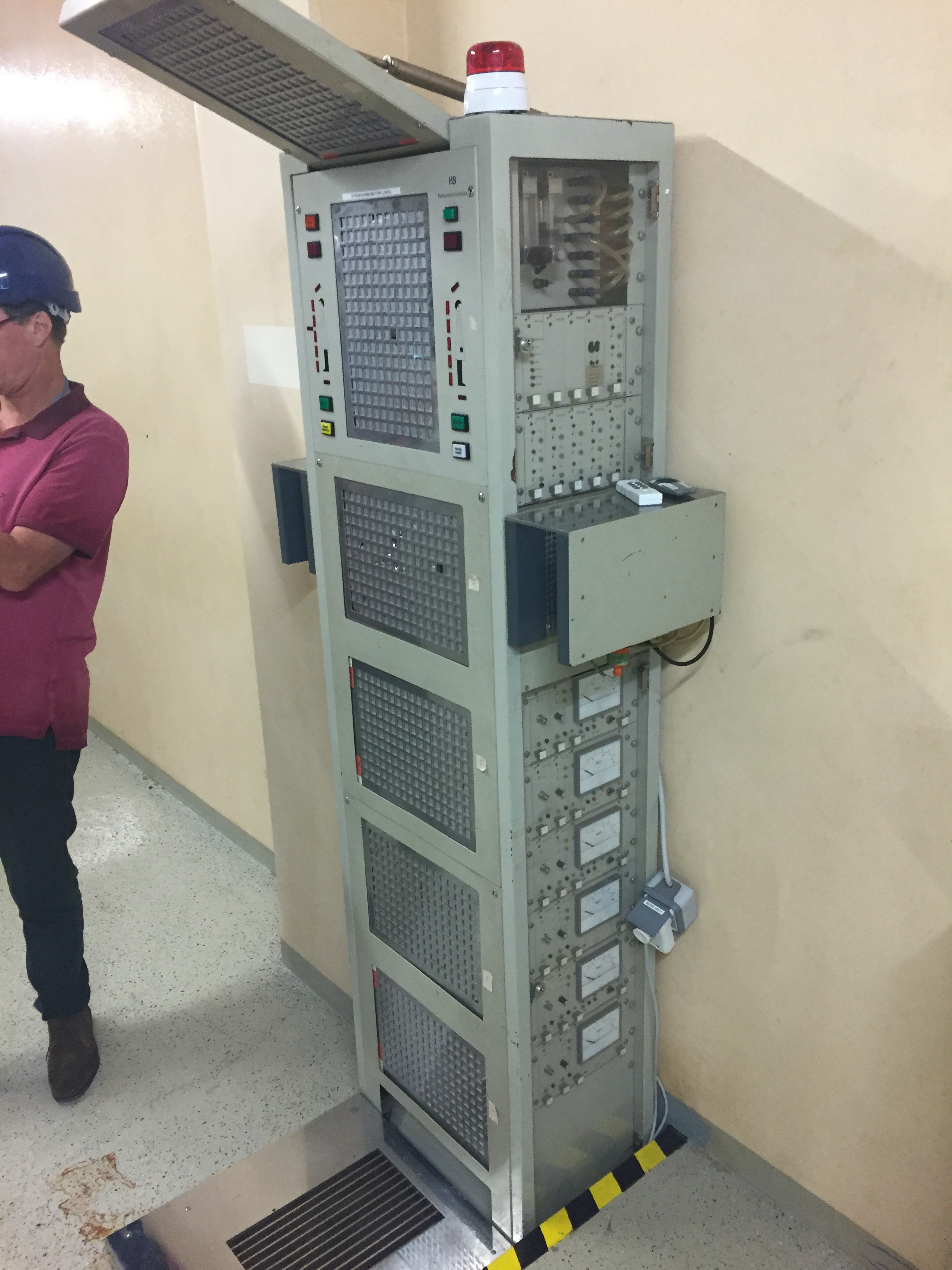
After a short hike through the corridors, we find ourselves in a hall with capacitors:
Condensers from the word “condense” - here the steam coming out of the turbines is cooled and condensed, in order to get back to the reactor core. The steam passes from the top down, and in the horizontal direction the water from the Danube is pumped through the pipes. In working condition, the horizontal pipes are closed with a lid, in the photo on the left.
Slightly heated secondary circuit water is poured back into the Danube, so the nuclear power plant of this model has no cooling towers with a cloud of steam. A small pipe near the station is intended only for emergency steam discharge (that is, it should not normally be used).
While we are walking along the corridors, they tell us a little about the work of the inspectors. About this you can write a separate article, I will mention only the main one. The overall objective is to prevent the proliferation of atomic weapons by early detection of misuse. The participating countries send reports, the Magate checks the objects to ensure the accuracy and completeness of these reports. For this, the inspectors:
In order not to measure all the materials every time, all that can be sealed with seals and set the type of surveillance (at this station, of course, there are no seals and video surveillance).
Large NPPs are the easiest objects for inspections - they work with packaged materials, and these materials move little. You can seal everything once, and then control only fuel reloading.
We go in the elevator and rise to the upper part of the station. There are no floors here, the buttons indicate the levels in meters from the ground level:
We are going to the very top, to the reactor hall, which is about 10 meters above the top of the sphere. Here you can see the fuel assembly (layouts, of course):
The control "rods" - inter-cassette absorbers - are made in the shape of a cross and walk between the fuel cartridges, in each of the four. On the other hand, the rod drive is visible: a motor and a capsule for the rod under the active zone.
The reactor is now open, the core cover is hanging on a special tap:
The pressure in the active zone is about 75 atmospheres, so the cap is bolted with massive bolts. Diameter of about 15 cm:
Finally we reach the most interesting - the pool, under which is the active zone:
Below you can see the top of the sphere. The hole in it is the top of the active zone - the cover is lowered there, another hatch is covered with a sphere and “pressed” by concrete blocks (they can be seen at the very top of the photo). The NPP under the project was supposed to withstand a direct hit by an airplane or a rocket without violating the integrity of the containment.
Down the stairs leads, and the inspectors climb there for training. Unfortunately, our guide flatly refused to go there (said that he is retiring - just like Pechkin).
Now only lighting, ventilation and heating are working at the station. And this is a concrete bunker with no windows and small doors. Naturally, it is damp inside and a lot of condensate, therefore slippery, and in general it was not built for tourists. Therefore, it is possible that this is not a joke that this station may turn out to be more dangerous than a working nuclear power plant. Although we have not answered whether there were already accidents.
Nearby is a pool for spent fuel:
Spent fuel is very radioactive and produces a lot of heat, so it is left under water for several years until the radioactivity decreases. Then you can pack in a container and send for recycling or recycling. During operation of the station pool for fuel is constantly filled with water. The pool above the reactor is usually dry; to unload the fuel, it is filled, the door is opened (in the photo above) and the assemblies are transferred under water.
In the background you can see the orange crane for fuel assemblies. You can clearly see the active zone of the reactor from it, but my phone ran out and refused to take it off. However, now there is not much to look at, just a cylinder with a spiral staircase inside.
This is a remote control crane. Cranes are all in working condition, operators of other similar NPPs are trained on them.
From the reactor hall you can go to the roof of the station, which of course we did. The station is right on the banks of the Danube:
In the center of the photo you can see the discharge of water from the condensers. And the pumping station for water intake is located to the left, under the asphalted ground (a corner of the orange fence of the pumping station can be seen in the photo).
We descend back, go through the reactor hall and go to the warehouse of dry fuel storage. Unfortunately, the phone is discharged, and there are no photos. The fuel depot is a small room used to store fuel assemblies prior to loading into the reactor. She even managed to completely fill out just before the referendum, and then all the fuel sold out.
Then we go down even lower and get to the top of the sphere. The phone turned on again, because there will be more photos :)
The intricacies of the pipes are amazing. In the halls of the station, the equipment is placed at a comfortable distance, there is plenty of space for pipelines, but inside the space is limited. Probably, it was very nontrivial to calculate how to push everything here.
We get down to the bottom of the sphere and get into the condensation chamber. There is no serviced equipment and it is usually impossible to get into it: firstly, when the reactor is operating, it is half filled with water, secondly, there is no entrance at all. But in Zventendorf cut the door.
This room is a bagel around the core. In the event of an accident outside the sphere (for example, a pipeline breakthrough) or detection of increased radiation in water, the water cycle could be closed inside the sphere. The reactor generates a lot of steam, and in order to “utilize” it, it is pumped under water, where it gives off heat and condenses.
The water level normally covers a little pipe. There is no serviced equipment - in general, no equipment except pipes.
Now the camera is used as a wall for the inscriptions “Vasya was here” - unfortunately there was nothing to write.
At the exit, I found a nut. Big for stalker:
We descend even lower and get into the room “under the sphere” (but still inside the solid case of the “sphere”). Here are the actuators control actuators absorbers.
And also a lot of any pipelines and devices:
Up there is a ladder through which you can climb into the core and crawl through the reactor and pool up to the reactor hall.
The fact that there could be high pressure, remind double hatches:
Now look at the generator (or turbine) room.
There should have been 3 steam turbines (high, medium and low), closed with blue lids, of which the middle is in place and the other two are open. The medium-pressure turbine (from the capsule now closed) has long been sold to a coal-fired thermal power plant in Germany. Two others can be considered.
Covers also perform the role of radiation protection. A single-circuit nuclear power plant, because the steam entering the turbines could be contaminated. For the same reason, two steam columns are installed nearby:
Unlike the condensation chamber, there was no water in them, they had to take much less steam. In the event of an accident, steam from pipelines outside the protective sphere can be redirected to these columns, and only at the very least can be released into the pipe.
Now they hold classes for turbine assembly, welding, etc. engineers. - because on the blades mysterious inscriptions:
Finally, some more pipelines:
On this, our fascinating tour ended. Now the station is used as a museum and training ground, as well as on its territory there is a small solar power station. The project is an image project, a board showing the power hangs on the station wall - on the day of our excursion it was 130 kW, that is, 5000 times less than the power of the nuclear power plant.
Thank you so much Carlos Oliveri for the great tour! I would be grateful to everyone for the amendments, hints and correction of typos!

KDPV not with nuclear power plants at all. There are no such tablets in Zventendorf.
In addition, the station may not be considered the safest, but more on that below. Carefully, many photos (all clickable).
A bit of history
Long ago, in Austria, they also wanted to develop nuclear energy and in 1972 began to build nuclear power plants on the banks of the Danube near Tulln. The station was called Tullnerfeld. In 1978, the NPP was completely completed, tested, the fuel assemblies were delivered to a dry storage facility, it remained to be loaded into the reactor and turned on. By that time, green protests had already begun, and it was decided to hold a referendum. It is believed that the main motive for the referendum was political - the then Chancellor Bruno Kreisky was confident in the absolute support of the population and wanted to hold and win the first referendum in the new history of Austria, but he was wrong, and the result of 50.47% was 49.53% defeated by opponents of the NPP. Perhaps the result was influenced by the fact that Kreisky promised to resign in case of defeat. He never resigned, but this difference was enough to completely abandon nuclear power in Austria.

After the referendum, the entire nuclear program of Austria was closed and tried to “forget”, 2 planned stations in St. Petersburg Pantaleon-Erla and St. Andrä was canceled, according to unverified information, there were plans to build another 2, but now they are difficult to find even in the archives.
Tullnerfeld was renamed Zwentendorf, fuel was sold back to Westinghouse, the station was mothballed in the hope that public opinion would be changed and the station would be switched on. But by the mid-80s it became clear that the ban would not be lifted, but it would be expensive to maintain a conserved station. Because the station was completely closed, and the reactor equipment began to gradually sell off to other reactors of this type. The result was a unique historical monument and museum, as well as a training ground for NPP operators and Magate inspectors. By the way, on Fridays there excursions for everyone (but only over 16 years old), I recommend .
And to replace the next built coal power plant Dürnrohr of the same capacity, smokes so far.
Some technical details
The station has one boiling water reactor with a capacity of 723 MW (BWR, Boiling Water Reactor). This is a single-circuit reactor with containment (containment) in the form of an iron sphere, which in the event of an accident should contain radioactive substances inside. The sphere is located in a concrete building that protects from external influences - let the professionals correct me, not sure whether the building should be considered part of the containment: it protects, but is not airtight .
Turbine generators are outside. On the wall I found a sphere map:

Orange color shows the core, steam dehumidification devices and pipelines towards the generator turbines. Turbines rotate at a speed of 3000 rpm, because water droplets are harmful to the blades and the steam must be “dry”. Green indicates pipes through which water from condensers is pumped back into the reactor. Below on the plan (white tubes) control rod drives are shown.
Look at the station
To begin with, we were shown a film with historical footage from the station’s construction. A sphere with a diameter of 26 meters, together with the reactor, was assembled near the station, and then completely dragged into the building and concreted the wall. Unfortunately, this video I have not found anywhere else.
After a short briefing on TB we pass through the territory of the station and through the massive iron doors we get inside. In front of the doors, our guide tells us that here the inspector must think carefully whether he has forgotten something. At the gate explains why: at a working station, paperwork and changing clothes takes about half an hour. Approximately the same occupy the measurement of radiation and disguise for the exit. Of course there are wash basins, a zone for decontamination (shower), measuring devices:


After a short hike through the corridors, we find ourselves in a hall with capacitors:
Condensers from the word “condense” - here the steam coming out of the turbines is cooled and condensed, in order to get back to the reactor core. The steam passes from the top down, and in the horizontal direction the water from the Danube is pumped through the pipes. In working condition, the horizontal pipes are closed with a lid, in the photo on the left.
Slightly heated secondary circuit water is poured back into the Danube, so the nuclear power plant of this model has no cooling towers with a cloud of steam. A small pipe near the station is intended only for emergency steam discharge (that is, it should not normally be used).
While we are walking along the corridors, they tell us a little about the work of the inspectors. About this you can write a separate article, I will mention only the main one. The overall objective is to prevent the proliferation of atomic weapons by early detection of misuse. The participating countries send reports, the Magate checks the objects to ensure the accuracy and completeness of these reports. For this, the inspectors:
- check the station design compliance with the project. Here you need to be able to determine your position in space, in a closed room with many corridors, it is not easy;
- check the availability, quantity and composition of the declared materials;
- try to find undeclared.
In order not to measure all the materials every time, all that can be sealed with seals and set the type of surveillance (at this station, of course, there are no seals and video surveillance).
Large NPPs are the easiest objects for inspections - they work with packaged materials, and these materials move little. You can seal everything once, and then control only fuel reloading.
We go in the elevator and rise to the upper part of the station. There are no floors here, the buttons indicate the levels in meters from the ground level:
We are going to the very top, to the reactor hall, which is about 10 meters above the top of the sphere. Here you can see the fuel assembly (layouts, of course):
The control "rods" - inter-cassette absorbers - are made in the shape of a cross and walk between the fuel cartridges, in each of the four. On the other hand, the rod drive is visible: a motor and a capsule for the rod under the active zone.
The reactor is now open, the core cover is hanging on a special tap:
The pressure in the active zone is about 75 atmospheres, so the cap is bolted with massive bolts. Diameter of about 15 cm:
Finally we reach the most interesting - the pool, under which is the active zone:
Below you can see the top of the sphere. The hole in it is the top of the active zone - the cover is lowered there, another hatch is covered with a sphere and “pressed” by concrete blocks (they can be seen at the very top of the photo). The NPP under the project was supposed to withstand a direct hit by an airplane or a rocket without violating the integrity of the containment.
Down the stairs leads, and the inspectors climb there for training. Unfortunately, our guide flatly refused to go there (said that he is retiring - just like Pechkin).
Now only lighting, ventilation and heating are working at the station. And this is a concrete bunker with no windows and small doors. Naturally, it is damp inside and a lot of condensate, therefore slippery, and in general it was not built for tourists. Therefore, it is possible that this is not a joke that this station may turn out to be more dangerous than a working nuclear power plant. Although we have not answered whether there were already accidents.
Nearby is a pool for spent fuel:
Spent fuel is very radioactive and produces a lot of heat, so it is left under water for several years until the radioactivity decreases. Then you can pack in a container and send for recycling or recycling. During operation of the station pool for fuel is constantly filled with water. The pool above the reactor is usually dry; to unload the fuel, it is filled, the door is opened (in the photo above) and the assemblies are transferred under water.
In the background you can see the orange crane for fuel assemblies. You can clearly see the active zone of the reactor from it, but my phone ran out and refused to take it off. However, now there is not much to look at, just a cylinder with a spiral staircase inside.
This is a remote control crane. Cranes are all in working condition, operators of other similar NPPs are trained on them.
From the reactor hall you can go to the roof of the station, which of course we did. The station is right on the banks of the Danube:
In the center of the photo you can see the discharge of water from the condensers. And the pumping station for water intake is located to the left, under the asphalted ground (a corner of the orange fence of the pumping station can be seen in the photo).
We descend back, go through the reactor hall and go to the warehouse of dry fuel storage. Unfortunately, the phone is discharged, and there are no photos. The fuel depot is a small room used to store fuel assemblies prior to loading into the reactor. She even managed to completely fill out just before the referendum, and then all the fuel sold out.
Then we go down even lower and get to the top of the sphere. The phone turned on again, because there will be more photos :)
The intricacies of the pipes are amazing. In the halls of the station, the equipment is placed at a comfortable distance, there is plenty of space for pipelines, but inside the space is limited. Probably, it was very nontrivial to calculate how to push everything here.
We get down to the bottom of the sphere and get into the condensation chamber. There is no serviced equipment and it is usually impossible to get into it: firstly, when the reactor is operating, it is half filled with water, secondly, there is no entrance at all. But in Zventendorf cut the door.
This room is a bagel around the core. In the event of an accident outside the sphere (for example, a pipeline breakthrough) or detection of increased radiation in water, the water cycle could be closed inside the sphere. The reactor generates a lot of steam, and in order to “utilize” it, it is pumped under water, where it gives off heat and condenses.
The water level normally covers a little pipe. There is no serviced equipment - in general, no equipment except pipes.
Now the camera is used as a wall for the inscriptions “Vasya was here” - unfortunately there was nothing to write.
At the exit, I found a nut. Big for stalker:
We descend even lower and get into the room “under the sphere” (but still inside the solid case of the “sphere”). Here are the actuators control actuators absorbers.
And also a lot of any pipelines and devices:
Up there is a ladder through which you can climb into the core and crawl through the reactor and pool up to the reactor hall.
The fact that there could be high pressure, remind double hatches:
Now look at the generator (or turbine) room.
There should have been 3 steam turbines (high, medium and low), closed with blue lids, of which the middle is in place and the other two are open. The medium-pressure turbine (from the capsule now closed) has long been sold to a coal-fired thermal power plant in Germany. Two others can be considered.
Covers also perform the role of radiation protection. A single-circuit nuclear power plant, because the steam entering the turbines could be contaminated. For the same reason, two steam columns are installed nearby:
Unlike the condensation chamber, there was no water in them, they had to take much less steam. In the event of an accident, steam from pipelines outside the protective sphere can be redirected to these columns, and only at the very least can be released into the pipe.
Now they hold classes for turbine assembly, welding, etc. engineers. - because on the blades mysterious inscriptions:
Finally, some more pipelines:
On this, our fascinating tour ended. Now the station is used as a museum and training ground, as well as on its territory there is a small solar power station. The project is an image project, a board showing the power hangs on the station wall - on the day of our excursion it was 130 kW, that is, 5000 times less than the power of the nuclear power plant.
Thank you so much Carlos Oliveri for the great tour! I would be grateful to everyone for the amendments, hints and correction of typos!
All Articles

